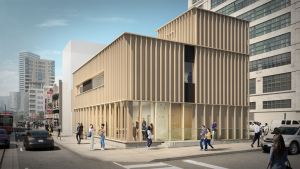Once upon a time, the rooftops of commercial, industrial or large residential buildings were out of sight and therefore out mind. For the most part, they were a handy location for the building’s air conditioning and ventilation equipment, accessed only by service personnel through a pokey little door at the top of a utilitarian interior staircase.
Today, rooftops are the new frontier of creativity and energy-efficiency. Rooftops are being put to use for solar panel placement for power generation, green spaces to reduce interior heat gain and gardens offering a relaxing outdoor tenant amenity.
They all cost money. With all these options, building owners must identify the true purpose of their roofs and consider whether the costs and complexities associated with the latest ideas are worth the additional investment.
From a pure operational carbon reduction standpoint, solar panels make a lot of sense, particularly if the roof area is large, like a shopping centre or industrial building. The power generated can offset a major portion of the building’s electrical demand from the grid. Yorkdale Shopping Centre in Toronto offers a case study.
Mind you, solar panels are expensive to buy or lease, despite lower prices over the past few years. And although maintenance is not particularly expensive given the high quality and longer lifetimes of PV arrays nowadays, there can be problems even with flashy high-profile brands.
For example, Tesla was sued by Walmart in 2019 when several store rooftop installations allegedly caused fires. Negligent installation and poor service were blamed. This reinforces the importance of due diligence on the part of building owners before selecting the brand, installer and maintenance provider.
However, solar panels do offer the advantage of being relatively lightweight. Although arrays may require ballasting to secure them adequately, additional underlying structural support is not usually needed, making them suitable for many existing buildings.
Perhaps the most talked-about choice today, particularly on new buildings, is the green roof. Enthusiasts speak of how the planting of grasses, flowers and even trees can attract birds, butterflies and bees. If creating biodiversity and absorbing rather than contributing to rainwater drain off isn’t enough, green roofs can also reduce the heating and cooling loads of the building’s interior.
So popular are green roofs today that some municipalities are mandating their inclusion on new buildings. For example, the City of Toronto’s Green Roof Bylaw and Eco-Incentive Program requires that a new project with a roof larger than 2,000 m² must include a green roof covering between 20 and 60 per cent, based on an overall area calculation.
For all their promised benefits, however, green roofs require additional structural support due to their weight as well as improved access, such as passenger elevators allowing maintenance and any recreational use by occupants. This it turns means more complexity, more costs, more building material and, by association, more carbon.
Therefore, matching rooftop design with purpose is critical. There must be true functionality beyond pure visual esthetics and cachet. Otherwise green roofs only add costs without value and risk becoming part of “greenwash” marketing, likened by one observer to a hybrid Cadillac Escalade.
Bringing solar arrays and green roofs together as a hybrid is also popular. However, care must be taken with the overall design. Shading from the PV arrays must complement rather than conflict with the plants and grasses being grown.
Looking for the simplest way to reduce the energy requirements for a building’s interior heating and cooling? Cool roofs are worth consideration.
In their most basic form, cool roofs are waterproof membranes that are light in colour and therefore reflect rather than absorb heat from the sun. While this may not appear practical for the mixed hot-cold climates seen in many areas of Canada, research suggests lighter coloured roofs do provide an overall year-round benefit. And although membranes need replacement over time, their reduced weight, lower installation costs and minimal maintenance make them an effective way to reduce the building’s energy load.
John Bleasby is a Coldwater, Ont.-based freelance writer. Send comments and Climate and Construction column ideas to editor@dailycommercialnews.com.









Recent Comments
comments for this post are closed